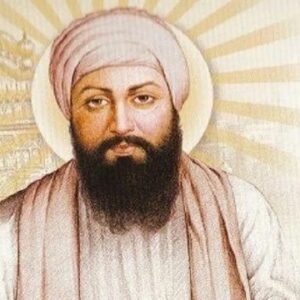The second of the ten Sikh Gurus was Guru Angad Dev. He started out on his spiritual path as a devout and earnest disciple of Guru Nanak Dev, the first Sikh Guru and the founder Prophet of Sikhism. He demonstrated to be a very devoted follower, faithfully carrying out the Guru’s instructions. His excellent moral character and knowledge won Guru Nanak’s favor, and he was chosen as the successor rather than one of his sons. Guru Angad, who was the son of a successful Hindu trader, became interested in religion and spirituality at a young age. He discovered Guru Nanak, became his follower, and made the decision to dedicate the rest of his life to serving the guru. He traveled to several locations to promote the guru’s teachings and provide donations to the needy on the advice of Guru Nanak. Following Guru Nanak’s passing, he carried on his legacy as the first Sikh guru by leading an ascetic life devoted to the welfare of others. The modernized form of the Gurmukhi script, which is now used to write the Punjabi language, is credited to Guru Angad Dev.
Early Childhood & Life
On March 31, 1504, in Matte Di Sarai, Muktsar, Punjab, India, under the name Lehna, he was born into a prosperous Hindu family. His mother’s name was Mata Ramo, and his father, Pheru Mal, was a successful trader. His family eventually relocated to Khadur.
Early on, he developed a keen interest in religion and spirituality, and as he grew older, he developed a strong devotion to the Hindu deity Durga. He led groups of pilgrims to the Durga temple in Jwalamukhi every year, where they danced and prayed.
When he first heard a neighbor and guru devotee, Bhai Jodha, recite a hymn of Guru Nanak, he was immediately enthralled. He asked his companions whether they would mind traveling to see the guru while on his yearly pilgrimage to the Jawalamukhi Temple. Being their leader, he complied with their request when the group disagreed.
But Guru Nanak’s chants were always on his mind. He was so overcome with the urge to meet the guru that one night he saddled up and rode out to the guru’s village. He was so moved by Guru Nanak’s humility and simplicity that he made the decision to follow him right away.
In later years
Lehna gave up all of his previous religious traditions and totally committed himself to the guru. Lehna was instructed by Guru Nanak to go back to Khadur and disseminate Sikhism’s teachings. Lehna went back as instructed by the guru.
He spent a lot of time educating the populace about Sikhism’s principles. He gave the underprivileged daily food distributions while devotedly serving the populace. But he yearned to return to his guru since he was so engrossed in his thoughts.
Lehna returned to serving Guru Nanak. He gave him his undivided attention and offered him his wholehearted service. Many times, Guru Nanak put Lehna to the test of his devotion and commitment, and each time, Lehna passed with the utmost loyalty.
According to legend, Guru Nanak put both of his sons and Lehna to the test to determine who would succeed him. Lehna diligently carried out the guru’s instructions while the sons disobeyed them. As a result, Guru Nanak was forced to select Lehna as his successor rather than one of his sons.
On September 7, 1539, Guru Nanak touched Lehna and gave him the new name Angad (part of the body), also known as the second Nanak. At this point, Lehna had served Guru Nanak at Kartarpur for six or seven years.
On September 22, 1539, Guru Nanak departed for his celestial residence. Guru Angad kept on his work and continued to preach Sikhism’s principles. Similar to his predecessor, Guru Angad lived a modest life and placed great significance on manual labor.
He worked for himself by winding coarse grass into cot threads to show that physical labor is respectable and attractive. He founded a number of new educational institutions while also traveling widely to preach Sikhism’s teachings.
He was really concerned about children’s education since he loved them. He established numerous schools to accomplish this. He believed that the youngsters would benefit more from instruction in their mother tongue. As a result, he made the Gurmukhi script widely utilized in education; it is now mostly used to write the Punjabi language.
He was a prolific author who, after gathering information from Bhai Bala about Guru Nanak’s life, published the first biography of the saint. A total of 63 Salons (stanzas) that he also wrote are present in the Guru Granth Sahib.
Guru’s Bigger Works
Guru Angad Dev is primarily known for popularizing the usage of the Gurmukhi script, which later became the preferred method of writing the Punjabi language used to convey guru hymns.
The Landa or Mahajani scripts were initially used to write the Punjabi language, but these scripts were unsuitable for the gurus’ hymns since there was a chance that the writing would be misinterpreted. The creation of the Gurmukhi script made it possible to convey the gurus’ teachings in their entirety and without any misunderstanding.
Personal Legacy & Life
In January 1520, Guru Angad married Mata Khivi. Two sons and two daughters were born into the marriage. His wife, a deeply devout woman, worked in the communal kitchen and personally served food to the guests and followers.
Amar Das was chosen by Guru Angad Dev to succeed him before he passed away. On March 28, 1552, Guru Angad passed away at the age of 47.
Estimated Net Worth
Unknown.


